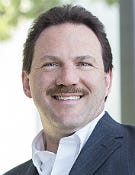eSentire's New CEO, an HP, Verizon Vet, Aims for More Business Through Partners
eSentire's new CEO is charged with driving the cybersecurity company's next stage of growth.


Edward Gately
**Editor’s Note: Click here to see which channel people were on the move in January.**
A top goal of eSentire‘s new CEO is rapidly accelerating the percentage of his company’s revenue that’s generated through the channel.
The managed detection and response (MDR) provider has appointed Kerry Bailey, previously with HP, as CEO, effective immediately. J.Paul Haynes, its former CEO, will assume the role of president and COO, and remain responsible for operations and the technical direction of the company.
Bailey is charged with driving the cybersecurity company’s next stage of growth.
“Kerry is a seasoned leader with extensive experience delivering high growth and creating value within the information security services industry,” said Cary Davis, managing director of Warburg Pincus, eSentire’s lead investor. “We are confident in his ability to take eSentire to the next level at this important time in the company’s growth trajectory.”
With more than 28 years of executive experience in IT services, Bailey served as HP’s senior vice president and general manager of cloud, and channel chief, where he led the growth of private, public and hybrid clouds, and the worldwide indirect channel, respectively.

eSentire’s Kerry Bailey
Prior to HP, Bailey held various senior executive roles at Verizon Enterprise, including CEO and president of Terremark, a Verizon company. Earlier roles include CEO of Betrusted and Security Assurance Group, and various senior executive level positions at CyberTrust and the U.S. Intelligence Community (IC).
Last summer, eSentire launched its next-generation logging and event management platform for MDR.
In a Q&A with Channel Partners, Bailey says he’s all about putting partners front and center, and plans to continue the company’s rapid year-over-year growth.
Channel Partners: Why did you want to join eSentire?
Kerry Bailey: When I had the opportunity to look at a lot of companies from a private-equity standpoint, eSentire had all these check boxes that meant a lot to the continued run at the speed at which the market’s moving and how we need to be moving. Here’s a company that has grown 50-60 percent-plus year over year consistently, and it’s not a small-revenue company. So the growth was there. The second thing is, when I talk to all the customers, the NPS scores and the excitement and satisfaction of our customers was pretty crazy. And then you look at it and say this new space, the new way of doing security is MDR — and they’ve created a category and they’re the leader in that category. With my skills of how to grow a business and mature a business, and continue to take its leadership to another level, I had to join eSentire. You don’t find many companies that have tailwinds; they don’t have legacy, they have growth, they had all the check boxes so it was kind of an easy decision for me.
CP: You have a lot of experience working with the channel. How will that come into play in your new role?
KB: My background in the channel at HP is we had 90,000 partners and certainly I knew how to manage the traditional channel, but because the market is moving, I spent a year and a half working with partners that were in the transition to services, partners that understood how to …
… sell into buying patterns of companies and enterprises that really wanted to buy a service or buy a software that would be managed by a service. And I worked heavily for a year and a half transforming that channel. I learned a lot about what the traditional VARs were going through to move to toward services businesses. So when I came here, I said the channel will be our top priority, we will be a partner-first company and we will have a very easy partner program to do business with. We already do 28 percent of our business through the channel, but my experience of how to put a partner program together that is a services led-like partner, and then partner with them while this market is changing, will put channel literally at the top of our priorities.
CP: What do you want eSentire’s partners to know about you?
KB: The first thing I say every time I talk to a partner here is I understand their transition, I understand where they’re going, I know the importance of recurring revenue and I understand the importance of having a channel program that addresses this type of partner. We will continue to enhance our channel program and really take it to another level, and I would like every partner to know we’re partner first. And if they are moving to a managed-service business, if you imagine a workload coming from an enterprise and moving to anywhere, security has to be wrapped around it. And that’s what these type of partners, whether you call them super VARs or managed service partners, they have to have — the new style of security embedded into their offerings, and I think we’ll be a great partner for companies like that.
CP: The Industry is becoming increasingly competitive as threats and breaches reach an all-time high. With that in mind, are you constantly having to evolve to stay on top of things, including business and channel strategies?
KB: Our value to our customers right now is our ability to look for threats that are not known. We hunt threats that have not been identified; they are threats that are not sitting in a bad list that an MSSP might be tracking. We have [intellectual property] that we continue to put innovation around — artificial intelligence (AI), machine learning, etc. The workload is moving, and the workload is moving so that companies can operate in this digital world. When that moves, the complexity of the threats, and the vulnerabilities and privacy, and compliance, it’s far more complicated. So you’re going to see those threats continue. You’re going to see companies never having enough staff or the knowledge to be able to combat those threats, and staying with traditional security is only going to open up holes for them. So for us, we have to stay on top of the complexity. And the big difference between traditional security, and what we do with managed detection and response, is we can detect in seconds and shut down in seconds. We’re not there to say, “Hey customer, you have a threat, you need to do something about that. No, this is detection and response. But the complexities are going to continue out there for everyone.
CP: What are the biggest issues facing eSentire and what will be your role in addressing those? What role will partners play?
KB: The first thing is when you’re the lead dog, everyone’s chasing you. So we’ve got to stay strong with our innovation pipeline; we will continue to invest heavily in our innovation pipeline, but that’s No. 1 that we’re doing and focused on. The second piece is our growth. Because we are at a very good space and have a very good, market-leading offering, growth is definitely a challenge. We have so much growth coming in that we are taking …
… very big steps to continue to scale the business and make sure that we’ve got the platform that can get to $1 billion. We’ve got 600 customers now and we can go to several thousand customers. But at the pace we’re moving, we’ve got to really prepare for that growth that we’re seeing continually hitting our doorstep. I’ve got to stay focused on innovation, I’ve got to make sure that we continue to be well-positioned to deliver the growth, and keep the customers and partners happy.
CP: What is your take on eSentire’s current channel strategy and partner program? Are changes needed?
BK: I would say that for a company that has been in the MDR space and has evolved itself into this leadership position, our channel is very good. It has a good attention of technology resellers, good attention to the managed services resellers; however, the channel needs to scale. It’s going to be over 50 percent of our business, and I want to go from 28 percent to roughly 40 percent of the business by the end of the year, which means we do need to make a broader definition of our program strategy, get it out into the market with the super VARs that have made big moves toward services. So I think we’ve done great; we’ve got a program that our partners like, but I think we can take that partner program and make it easier to do business with us, open up more opportunities for the super VARs that are around the world, and then reach and put the proof in the pudding by having the majority of our revenue over the next couple of years be partner-led.
CP: What do you hope to have accomplished a year from now?
KB: I would say that at the broadest level I want us to have a partner program that we’ve hit 40 percent-plus of our business through the channel. That is a goal that starts getting the mindset of the company and our partners that we are a partner-first company. I want to continue to exceed the 60 percent-plus growth that we’re having … and then ultimately when we end the year, I’m going to be able to say we can get to $1 billion based on how we have scaled our platforms, our profits, our delivery, our customer care, our security operations center (SOC) operations, our machine learning and AI. It will be scaling all of those functions through this year so that … super growth now will turn into hypergrowth.
Read more about:
AgentsAbout the Author
You May Also Like


